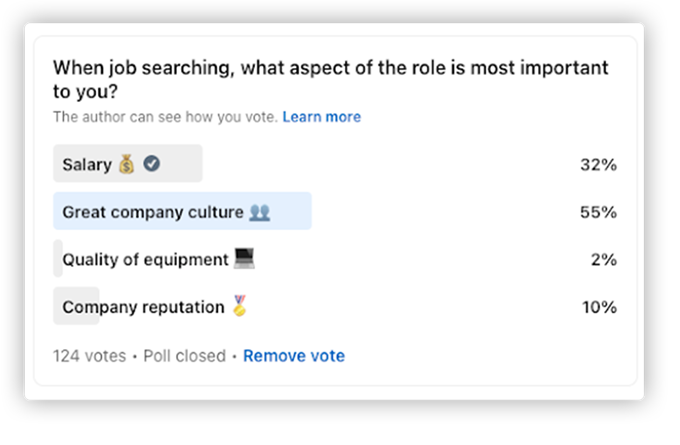Have you ever been in a job where you feel like you’re being micromanaged, where someone is watching your every move, they won’t let you make decisions and that for something to be done right, it needs to be done themselves? This is exactly what you don’t want to do to employees, instead, you want to EMPOWER them.
When you empower your employees, your business will thrive. Empowered employees will be engaged, they’ll come to work ready to work hard, they’ll feel creative and valued and this will have a ripple effect on the rest of your business. In this blog post we’re going to show you how you can empower your employees in your business and discuss:
- What is employee empowerment
- Types of employee empowerment
- Why employee empowerment should be a priority
- How you can achieve employee empowerment
What is employee empowerment?
Let’s start with the basic definition of empowerment. Empowerment is authority or power given to someone to do something. It’s also the process of becoming stronger, more confident and more in control of a situation. When people feel empowered, they in turn feel inspired, motivated and positive.
Employee empowerment is the way in which your business treats your employees in relation to autonomy and how they approach their job role. Employee empowerment is an important element of business that should be implemented by all companies, in all industries. Why? Because empowered employees are satisfied, committed and perform better in their roles.

So what does employee empowerment look like in real life? It involves involving employees in company decisions, recognising your employees hard work, providing training and development to employees and giving your employees freedom in their decision making. To empower employees is to give your employees the resources, opportunities, authority and motivation they need to thrive in their roles.
But let’s dig deeper and take a look into the different types of employee empowerment in the workplace…
Types of employee empowerment in the workplace
There are 3 levels of employee empowerment in the workplace, let’s take a look:
- The organisational level
- The managerial level
- The individual level
Organisational level: When your organisation is one that focuses on empowering employees you’ll reap a ton of benefits such as:
- Embracing changes such as digital transformation and tech adoption
- Retain top talent
- Create a great company culture
- Reward and recognising employees
- Better collaboration across departments and teams
Managerial level: Empowered managers will be able to:
- Support their teams and inspire individual team members
- Communicate company information and goals clearly
- Motivate teams and keep morale high
- Connect teams - those working in the office and remotely, or both
Individual level: When employees are empowered and trusted they are:
- Willing to put in extra time and effort for their team and the business as a whole
- Take ownership of their role
- Generate lots of ideas
- Not afraid to take risks that will better the business
- Able to find meaning and purpose in their role
- Are proud of the company and who they work with
Feel motivated and are highly engaged
Creating empowerment at the organisational and managerial level is essential and should already be present within your business. Achieving individual empowerment is that little bit harder.
It requires a lot of effort from different functions within the organisation. Therefore it’s super important that HR and Internal Communications work together to build a powerful internal communications strategy.
Why employee empowerment should be your priority
An empowered employee is one of the best assets your company can have. Human Resource Management found that 70% of employees surveyed felt that being empowered to take action at work was incredibly important. Zenger Folkman also found that employers who don’t empower employees will experience low effort. Only 4% of employees will put in more effort when empowerment is low, but when employees are empowered this rises to a whopping 67%.
By empowering your employees you’ll transform the way your business operates. The quality of work will be exceptional, your teams will collaborate and connect, your people will be more productive and you’ll reap the rewards financially and culturally.
How you can achieve employee empowerment
So now we know how important empowering your employees is, how do we actually go about doing it? Here are some of the best ways you can empower your employees.
Create a great company culture
People need connection, as human beings, it’s in our nature to be social and create connections with other people. Having a great company culture where people feel as if they belong is a wonderful thing to create. Having a strong company culture attracts top talent and more importantly, retains top talent. Guess how many people cited great company culture as one of the most important aspects of work… 55%.

When you have a good company culture, people look forward to coming into work, being part of a team, strengthening friendships and collaborating with one another. It makes work so much more enjoyable and is essential to a good employee experience.
Want your employees to look forward to coming to work? Read our Company Culture Guide for more information on how you can create the best culture at your workplace.
Improve internal comms
If there’s one thing that’s going to transform the way your workforce feels it’s going to be the communications you put out. Communicating your values and mission consistently, keeping your staff informed of everything going on and being transparent about events in the business is a great ways to empower your employees.
Having too many communication channels can be overwhelming and counterproductive. Having an all in one intelligent intranet can streamline your communications so that they’re all in one place, easy to reach and your employees won’t miss anything important. Yes, email… we’re looking at you.
With modern intranet features such as timelines and hubs allow people to share specific messages, create groups regarding certain projects and interests inside and outside of work and instant chat functions mean you can speak to anyone in your organisation, anytime, anywhere.
Recognise your employees
How often do you praise your employees? It’s important to make a regular habit of it. Recognising your employees can be done in many different ways. You can recognise employees publicly through any intranet feeds, social media channels, email or in a newsletter.
Certain tasks and achievements call for something a bit more personal in some instances and this is where private recognition doesn’t go amiss either! Let your employees know just how brilliant they’ve been in a 1:1 meeting.
Other forms of recognition can involve promotions and even awards such as bonuses, trips, additional annual leave or end of year company awards.
Do you have a process for employee recognition?
A lack of tools can sometimes make recognition difficult and confusing. That’s why it’s really useful to have employee recognition software where you can reach all employees whether they’re remote or hybrid. This way you can recognise employees through instant messaging, social feeds and more on different occasions.
Learn more about the importance of recognition in our Employee Recognition in The Workplace [Complete Guide].
Amplify their voice
How can you empower people if you don’t allow them to voice their opinions and concerns? Employee voice is a crucial thing to encourage daily in your workplace. Creating a transparent, honest and compassionate environment where your employees feel that their voice is valued and their views are taken into consideration is the goal here. Feeling valued makes people feel empowered.
UK workers that experience a high sense of belonging (96%) are significantly more likely to feel valued and heard than those with a lower sense of belonging (14%).
Make sure you place importance on employee voice by ensuring leaders set the right tone that trickles all the way through your business, make sure people feel safe, encourage employee-centred leadership, have trust building conversations and provide information to employees in the right way.
Utilising the right tools so your employees can participate in conversations happening throughout the organisation is important in ensuring all employees feel heard….
Provide them with the right digital tools
Businesses that use the right digital tools are steps ahead of those that don’t. Having the right tools means communication is seamless, collaboration is easy and your employees have everything they need to thrive in their roles.
It also makes life much easier for those working in internal communications and HR. Need to update people on back to the office information? Send a push notification and mandatory read notification out at the click of a button. Want to set up social areas for employees to express themselves and bond over interests, create a hub. You can have specified areas where employees can visit to learn all about health and wellbeing or access any company documents.
By leveraging technology and all its benefits you give your employees the best experience possible. As time ticks on and Millennials and Gen Z who place a true value on tech begin to make up a large majority of the workforce, it’s important that you have up to date systems available for them.
In fact, 50% of millennials believe that social tools boost productivity but one in three respondents believed that their company undervalued tools. Apps are part of our daily lives now… Twitter, Facebook, Instagram… and having a company app is no different. Make sure you’re reviewing the tech you use and ensure it’s something that your workforce wants to use and are able to use easily.
In conclusion
By following these tips and ensuring your company is utilising the right technology and creating a culture that employees want to be part of and where they feel their best self - you’ll be leading a workforce of happy, engaged and empowered employees.


